|
|
Large Potter Wasp - Abispa ephippium
FAMILY VESPIDAE
This page contains pictures and information about Large Potter Wasps that we found in the Brisbane area, Queensland, Australia.

- Body length 30mm
- This wasp is very large and with strong body. Its head, antenna and legs are orange-yellow. Its thorax is black with orange-yellow triangle shoulder. Its abdomen is segmented with orange-yellow and black.


- Large Potter Wasps are common in Brisbane. We often see them searching for caterpillars on leaves in gardens and bushes.
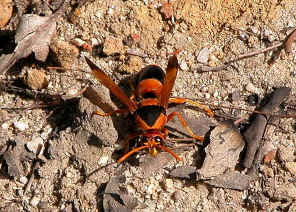
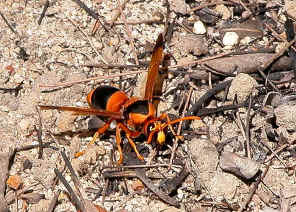
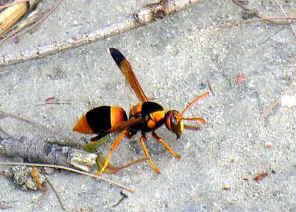
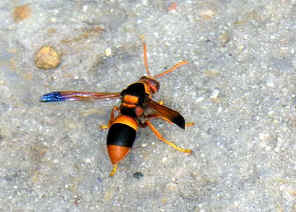
- Sometimes we see them collecting mud on loose soil.

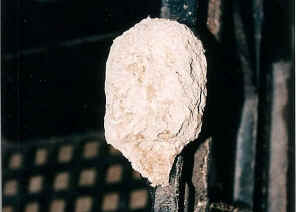
- Developing nest with unfinished cells Completed nest
- Large Potter Wasps are solitary wasps and build mud pot-shaped nests in sheltered area. Their nests are usually attached to tree trunks or the sides of buildings, often in small groups. Females lay an egg inside each pot cell which she then capture caterpillars for the developing larvae to feed on.
- When the larvae are mature they pupate in their pot and emerge as a fully developed adult.
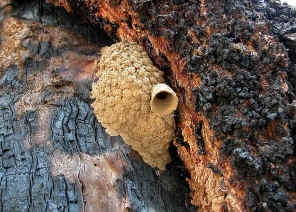
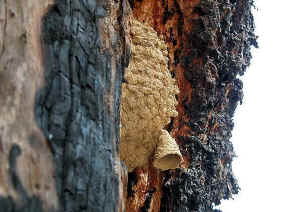
- In late winter, we noticed a partly built Large Potter Wasp nest inside a tree hole. After weeks, the nest remain the same. We knew the wasp had stopped building the nest for some reasons. We decided to collect the nest and see what would come out. We carefully removed the nest from the tree hole, however, we broke one cell. We saw a golden yellow pupa inside, 30mm in length. The pupa turn black and dead a few days later. We check that there should be another cell inside the nest. We keep the nest inside a covered jar.

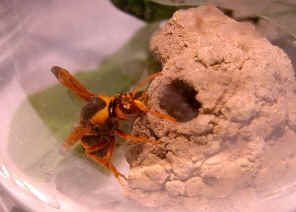
- After three months later, a Large Potter Wasp came out from the mud nest. It made a hole as the exit. We kept the wasp in the jar. We fed the wasp with some honey water. A week later, we believed no more interesting things will be happen. We let the wasp fly away from our backyard. Of cause, we did it with caution for we know the wasp will sting.
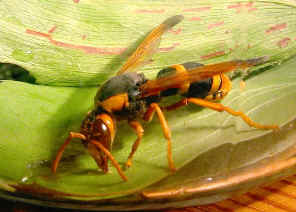
- They are large wasps and of course they will sting. However, we found that these wasps are not aggressive (some other wasp species are aggressive). Every time the wasps flew close to us, we kept motionless and they just circled a few times and flew away.
A Resting Wasp
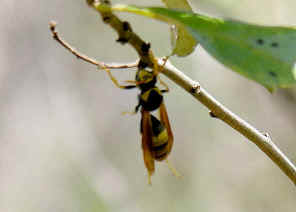
- Interestingly, like some other wasps and bees, we found that the Large Potter Wasp is also rest with holding stem by jaws.
